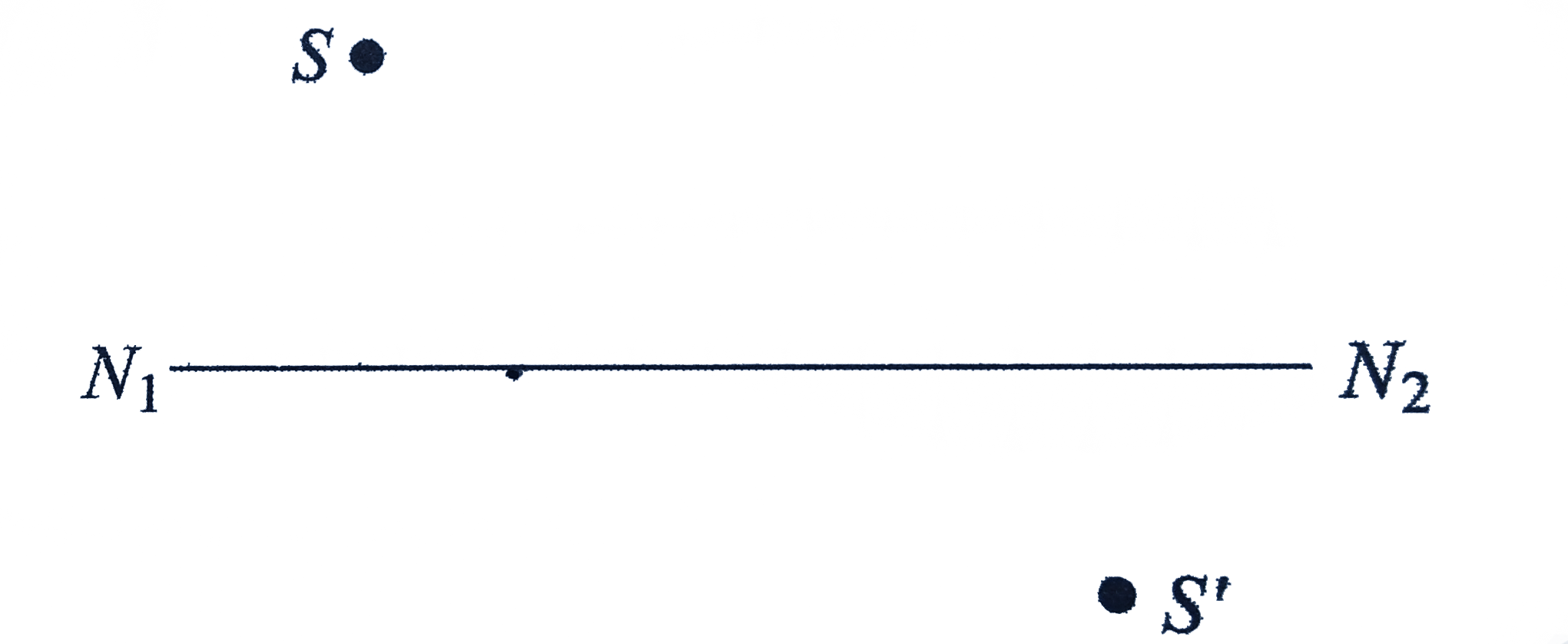A nuclide 1 is said to be the mirror isobar of nuclide 2 if A1=N2 and Z2=N1. (a) What nuclide is a mirror isobar of .2311Na? (b) Which nuclide out of the two mirror isobars has greater binding energy and why?
By defination, a nuclide 1 is said to be mirror isobar of nuclide 2, if Z1=N2andZ2=N1.
Now, in .11Na23,Z1=11,N1=23−11=12
∴ Mirror isobars of .11Na23 is .12Mg23, for which Z2=12 and N2=23−12=11
As .12Mg23 contains even number of protons against .11Na23 which has odd number of protons, therefore .12Mg23 has greater binding energy than .11Na23
Topper's Solved these Questions
- BOOK - PRADEEPCHAPTER - ATOMS AND NUCLEIEXERCISE - (II) very short answer 161videos
ATOMS AND NUCLEI
- BOOK - PRADEEPCHAPTER - ATOMS AND NUCLEIEXERCISE - (I) Short Answer questions 11videos
ATOMS AND NUCLEI
- BOOK - PRADEEPCHAPTER - COMMUNICATION SYSTEMSEXERCISE - MODEL TEST PAPER-29videos
COMMUNICATION SYSTEMS
Similar Questions
B={an:n∈N,an+1=2ananda1=3}
View Solution(a) State the law of radioactive decay. Plot a graph showing the number (N) of undecayed nuclei as a function of time (t) for a given radioactive sample having half-life T12.
Depict in the plot the number of undecayed nucei at (i) t=3T12 and (ii) t=5T12.
(b) The half-life, of a given radioactive nuclide, is 138.6 days. What is the mean life of this nuclide? After how much time will a given sample of this radioactive nuclide get reduced to only 12.5% of its initial value?View Solution
Knowledge Check
- Question 1 - Select One
The two nuclides zAm and z−2Bm−4 are known as
AisotonesBnuclear isomersCisomersDisodiapheres - Question 2 - Select One
The half life of 2g sample of radioactive nuclide 'X' is 15 min. The half life time of 1g sample of X is
A7.5 minB15 minC22.5 minD30 min - Question 3 - Select One
Two mirror labelled L1 for left mirror and L2 for right mirror (L2) looks into this mirror and sees a series of images. The second nearest image seen in the right mirror is situated at a distance:
_E01_003_Q01.png) A2.0 m from the personB4.0 m from the personC6.0 m from the personD8.0 m from the person
A2.0 m from the personB4.0 m from the personC6.0 m from the personD8.0 m from the person
A radioactive substance has half-life T12 and number of radioactive nuclides present initially was N0. What is the number of radioactive nuclides at time t ?
View SolutionPoint S′ is the image of a point source of light S in a spherical mirror whose optical axise is N1N2 (shown in Figure). Find by construction the position of the center of the mirror and its focus.
 View Solution
View SolutionA ratio nuclide with half life T=69.31 second emits β− particles of average kinetic energy E=11.25eV. At an instant concentration of β− particles at distance, r=2m from nuclide is n=3×1013perm3.
(i) Calculate number of nuclei in the nuclide at that instant.
(ii) If a small circular plate is placed at distance r from nuclide such that β−particles strike the plate normally and come to rest, calculate pressure experienced by the due to collision of β− particles.
(Mass of β−particle=9×10−31kg)View Solution(a) The number of nuclei of a given radioactive sample at time t = 0 and t= T are N0 and N0n respectively. Obtain an expression for the half-life T12. of the nuclide in terms of n and T.
(b) Write the basic nuclear process underlying β−-decay of a given radioactive nucleus.View SolutionNuclei with magic no. of proton Z=2,8,20,28,50,52 and magic no. of neutrons N=2,8,20,28,50,82 and 126 are found to be stable. (i) Verify this by calculating the proton separation energy Sp for .120Sn(Z=50) and .121Sb=(Z=51).
The proton separation energy for a nuclide is the minimum energy required to separated the least tightly bound proton form a nucleus of that nuclide. It is given by
Sp=(Mz−1,N+MH−MZ,N)c2.
given .119Sn=118.9058u,.120Sn=119.902199u,.121Sb=120.903824u,.1H=1.0078252u
(ii) what does the existence of magic number indicate?View Solution

